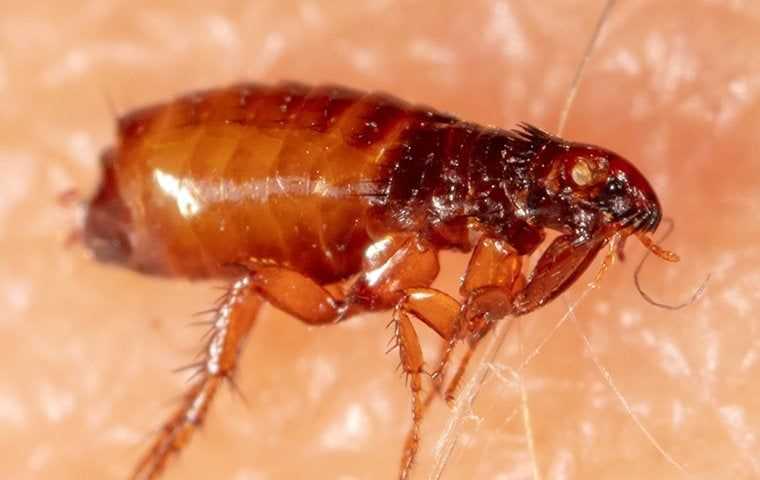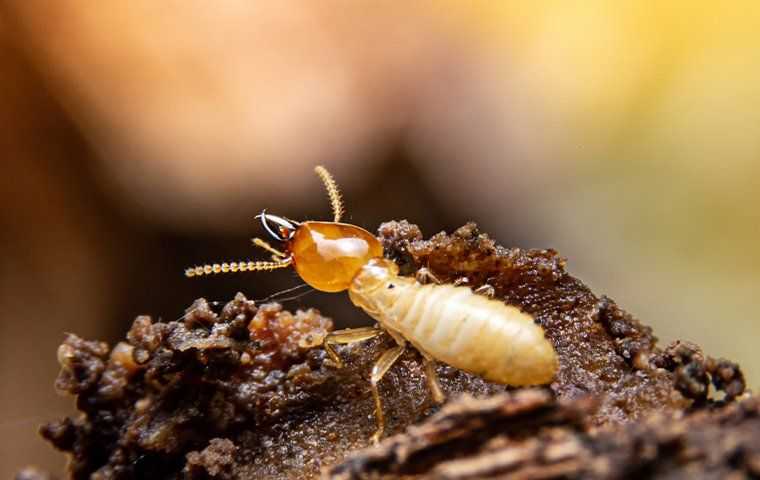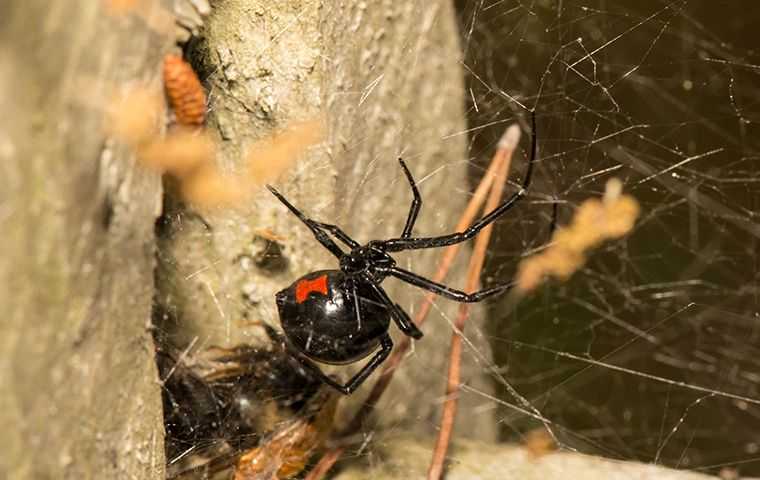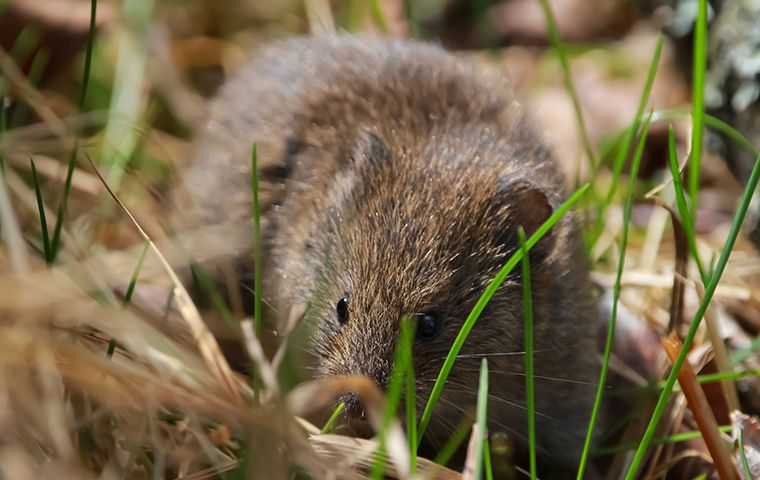Fleas are annoying pests. When they get inside, it can feel like they keep coming and coming. How do you stop them from taking over your home? That is our subject today. We're going to look at the lifecycle of the common flea, what attracts fleas to your home, and what you can do to keep fleas out.
We'll also cover what you can do if you're currently dealing with a flea infestation and whether or not professional pest control in Sacramento is the way to go.
The Lifecycle Of The Common Flea
When you see fleas springing around inside your home, there is little doubt that you have a flea infestation. But, as you work to get rid of an infestation, you may be working with some misinformation. Tiny fleas jumping up at you from your floor are not baby fleas, though they might seem like it because they're so small.
Those tiny pests are full-grown, adult fleas. Why is this important? It is important because you need to be aware that it does not mean that you no longer have fleas in your home when you stop seeing fleas jumping around. Let's take a close look at the stages of a flea's life and how they impede your ability to control a flea infestation.
- Flea larvae are wiggly worms. They don't jump through the air and they can't bite you. Yes. You read that correctly. Baby fleas cannot leave flea bites on your skin. If you have lots of bites, you have lots of adult fleas in your home.
- Flea larvae eat flea dirt for sustenance. Flea dirt is the feces of adult fleas. Baby fleas need a protected location in your home to grow from larvae into adult fleas. Check pet bedding and any other place your dog or cat beds down. An infestation can arise when flea eggs and flea dirt fall off your pet in a protected area.
- A flea egg is about .5 millimeters long and is hard to see. Fleas are hard to exterminate when inside their eggs because the shell offers protection from many over-the-counter flea control products. Since flea larvae don't spring around inside your home, you may think you've stopped an infestation when you've only eliminated adult fleas. Do you see the problem?
- Flea larvae grow and enter a cocooned state. The cocoon offers similar protection to eggs. The difference is that adult fleas can emerge from cocoons almost immediately after you spray your entire house, and you'll see them jumping around. You're not going to have to wonder whether or not your treatment failed. You will, however, wonder why. Hopefully, this provides some insight.
Do you see how understanding the lifecycle of fleas can help you understand what is happening when you attempt to get control of fleas in your home? Let's turn our attention to the conditions that can lead to a flea infestation. You might be accidentally attracting fleas without realizing it.

Are You Accidentally Attracting Fleas?
Flea control for your house begins in your yard. Your dog or cat goes outside, picks up adult fleas, and brings them inside. Once inside, the eggs hatch, and the larvae emerge. A short time later, your home is teeming with fleas. Before all this happens, there are ways to prevent fleas from coming into your yard.
Do you know how fleas come into your yard? They hitch rides on wild animals. Any furry or feathery animal will do. If you don't want a flea infestation in your home, you need to remove attractants that bring animals near your home.
- Bird feeders. Many animals eat seeds. If you have bird feeders, we recommend removing them or placing them well away from your exterior walls to prevent animals from coming in close and dropping flea eggs and flea dirt.
- Garbage. Many animals are attracted to the scent of rotting food. Keep your garbage in covered containers and secure your containers so a mid-sized animal cannot easily knock them over.
- Nuts and fruit. Animals love these food sources. Stay on top of clean-up if you have trees that produce nuts or fruit.
- Unprotected voids underneath exterior structures. When animals bed down, they create the conditions necessary for flea development. Larvae that hatch from eggs need flea dirt to survive. Use fencing material to keep animals out from underneath decks, porches, patios, stairs, crawlspaces, etc.
- If you have a dog and your dog doesn't have a fenced-in play area, we recommend creating one. Fences help to keep your dog(s) from picking up fleas around your yard and they also keep wildlife from tracking through this critical zone.
- Reduce moisture near your home. Fleas die when they become dehydrated. A damp perimeter or habitat can provide what fleas needs for survival. Make sure your gutters channel rainwater away from your exterior. Trim your landscaping and remove plants in densely vegetated areas to prevent moisture from getting trapped. Rake leaves and remove them from your yard as soon as possible. Pick up dead branches and store them in a bin, remove them, or burn them in a firepit.
- Seal potential entry points to keep rodents out. A mouse or rat can spread fleas around. Use a caulking gun to seal gaps, cracks, and holes. Perform routine inspections to detect rodent droppings, damage, and other warning signs.
- Trim tree branches away from your roofline and put wire mesh in the downspouts of your gutter system to prevent mice and rats from getting into your home by way of vulnerabilities on your roof.
- Protect gable vents and louvers with hardware cloth to keep mice, rats, and squirrels from using these common entry points.
- Remove clutter from your yard. Animals hide in stacked wood, piles of junk, etc. They are particularly attracted to organic materials.
- Fill in holes. Some animals are attracted to yards with lots of holes to hide inside.
When you attract wild animals to your yard and provide hiding places or nesting locations, you increase your chances of a flea infestation. The first step is to remove attractants. If this isn't enough, you might need to use scare tactics, such as installing a motion-sensitive light. When even more control is needed, it is time to contact a licensed professional for wildlife management.
How To Get Fleas Out Of Your House
Now that you know how fleas get inside and how infestations can have you scratching your head (and other parts of your body), it is time to talk about flea removal. Before you head to the pet store and buy every flea control product you can get your hands on, there are two things you should know.
- All-natural flea control may be all you need to arrest a flea infestation in your home. Sometimes fleas don't completely take over and are isolated to one area. Put pet bedding and your bedding through a 30-minutes dryer cycle. Heat will exterminate fleas in all stages of development. Vacuum your rugs routinely until you're sure the fleas are gone. Wash clothing that fleas may have gotten into. Consult your veterinarian about flea collars and other targeted flea control products for your pet. You're going to need to address the fleas on your pet if you hope to get rid of the flea infestation in your home.
- If you use a product to treat your home, make sure it is residual. You need to address protected fleas hiding inside eggs and cocoons as they emerge.
These two steps can get rid of fleas in your home, but if there is an unknown source hidden in your home or flea pressures are higher than normal around your home, it is best to contact a licensed pest management professional.
If you're in the Sacramento region, contact HomeShield Pest Control for a flea treatment. We use a multi-pronged strategy consisting of an inspection, treatments, monitoring, and evaluations to ensure no fleas remain in your home.
No More Fleas In Your Sacramento Region Home
Along with flea pest control, the service team at HomeShield Pest Control can help you address flea populations around your home. Our ongoing residential pest control services can give you coverage for fleas. Routine treatments prevent fleas from living near your home and getting on your dog or cat. We can also address rodent pressures by deploying and monitoring traps around your home. As we've pointed out, your furry family members are not the only animals that bring fleas into your home. You need to consider mice, rats, and squirrels as well.
If you'd like to learn more about our residential pest control plans or would like to schedule your first service visit, reach out to us. HomeShield Pest Control offers industry-leading pest control and pest management services. We can guide you toward the right solution for your specific needs and budget. We look forward to helping you get ahead of flea problems to reduce the risks associated with fleas.






















